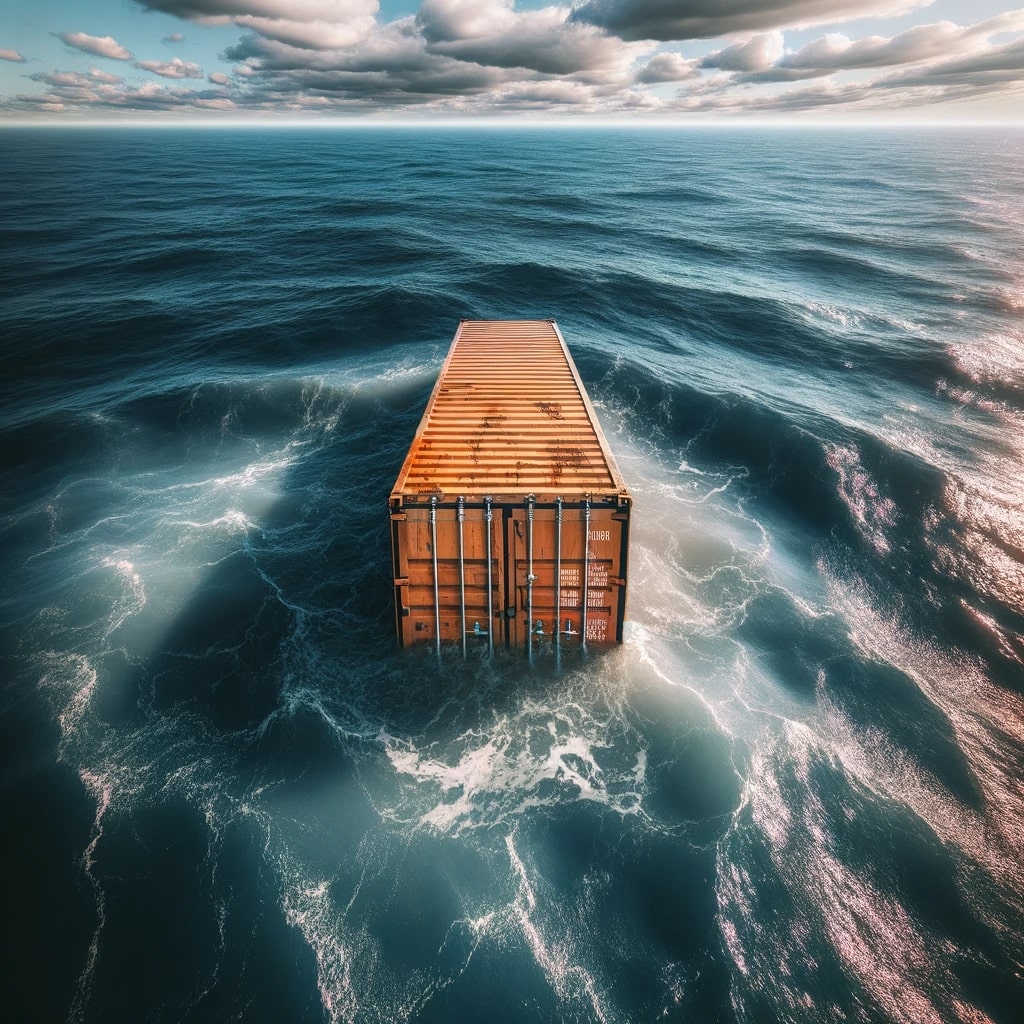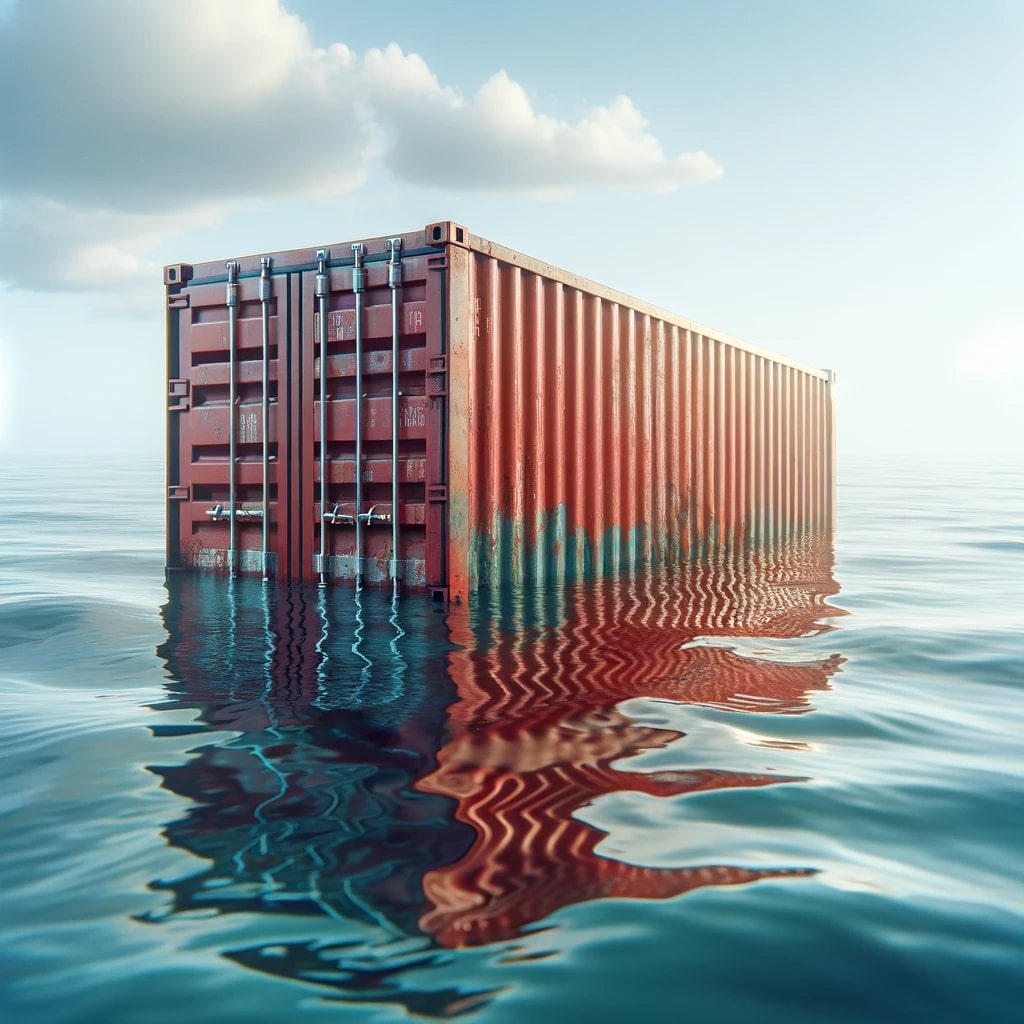Unveiling the Surprising Aquatic Abilities!
The buoyancy of shipping containers is a peculiar yet fascinating topic for both maritime professionals and the curious layperson. They may envision these steel boxes as heavy and impenetrable units, likely to sink when immersed in water. However, the reality is much more interesting. Many will be surprised to learn that, indeed, shipping containers can float.

Their ability to remain afloat is dependent on a variety of factors, such as the type of container, the weight and type of cargo they carry, and the integrity of their structure. While it’s often assumed that these containers are watertight, that isn’t necessarily the case, which influences how long a shipping container can float before succumbing to the depths.
A shipping container’s time adrift in the ocean can fluctuate widely. It has been observed that containers with lightweight, low-density cargoes can maintain buoyancy for extended periods – sometimes even for years.
This fact raises intriguing considerations about maritime safety and the environmental impact of containers lost at sea.
Basics of Buoyancy and Shipping Containers
Shipping containers showcase the fascinating interplay of physics and engineering. They demonstrate how massive steel structures can remain afloat, a concept rooted in the principles of buoyancy and meticulously considered design.
Principles of Buoyancy
Buoyancy is the force that allows objects to float in a fluid, such as water. It stems from the fact that when an object displaces a liquid, the liquid exerts an upward force on the object.
For a shipping container to float, this buoyant force must overcome the downward gravitational force acting on the container.
An intriguing insight into this principle is that the container will float as long as the buoyant force is greater, a phenomenon explained by the principle of buoyancy.
Dimensions and Design of Containers
The size and design of shipping containers are critical in determining their buoyancy. Standard containers typically have dimensions that allow for a certain amount of air to be trapped inside, contributing to their overall buoyancy.
Moreover, their design includes features that may help them remain buoyant temporarily. Even though the materials are not inherently unsinkable, it’s the balance between the container’s weight and the water displaced that decides if it will float.
If a container is less permeable and sealed effectively, it is likely to float for longer periods, as seen in shipping containers floating temporarily in emergency situations.
Scenarios and Safety Measures

Understanding the scenarios where shipping containers may float and the safety measures in place is crucial for maritime security and efficiency.
Emergency Situations When Containers Might Float
During maritime mishaps, shipping containers can end up in the ocean. Heavy weather conditions, such as storms or rough seas, can cause containers to fall overboard. Sometimes containers remain afloat due to buoyant cargo, but they often pose navigation hazards. Research indicates that containers with lightweight cargoes can float for years.
Preventative Practices and Container Handling
Shippers use rigorous practices to prevent containers from getting lost at sea. These practices include proper declaration of cargo weight, safe stowage and securing techniques, and regular inspections for integrity.
Additionally, industry guidelines ensure that the containers are stuffed appropriately to maintain stability and safety aboard the vessels. Effective container handling is key to mitigating risks associated with containers overboard.
